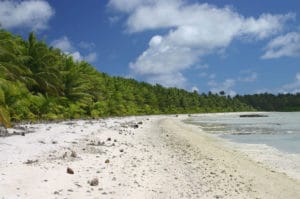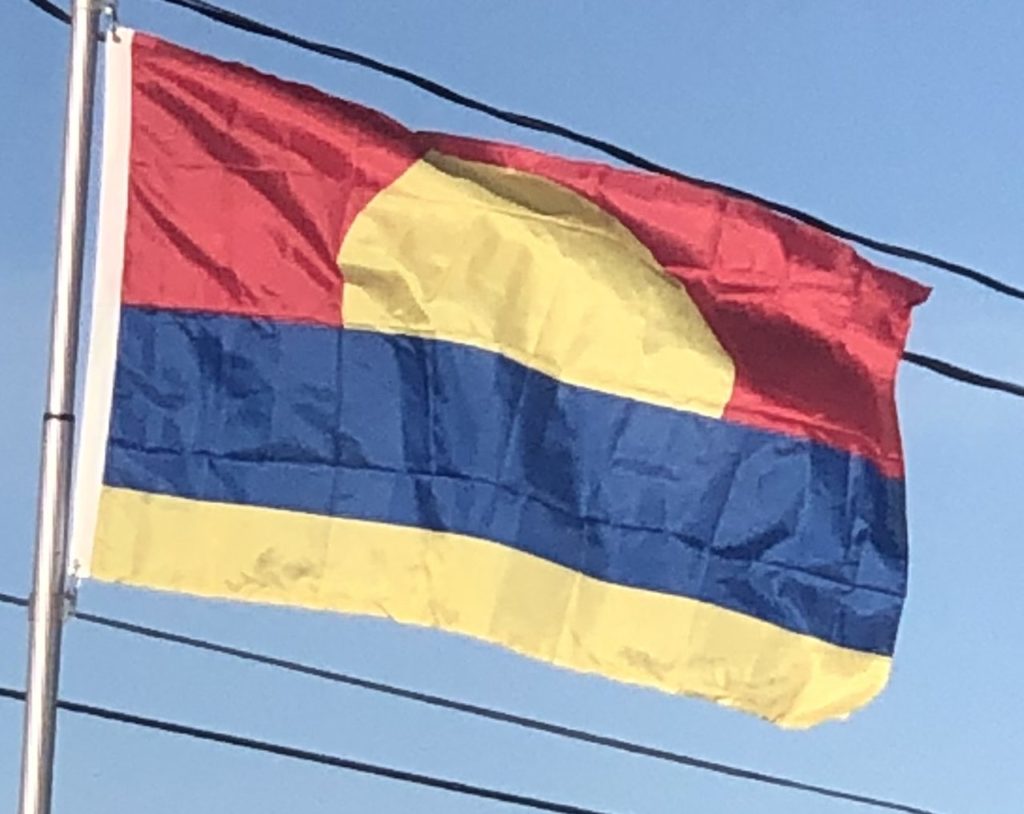After World War II, much of the Naval Air Station was demolished, with some of the materials piled up and burned on the atoll, dumped into the lagoon, or in the case of unexploded ordnance on some islets, just left in place.
U.S. Territory of Palmyra Island (Interior Department administration, 1959–Present):
When Hawaii was admitted to the United States in 1959, Palmyra was explicitly separated from the new state, remaining a federal incorporated territory, to be administered by the Secretary of the Interior under a presidential Executive Order.
In 1962, the Department of Defense used Palmyra as an observation site during several high-altitude nuclear weapons tests high above Johnston Atoll. A group of about ten men supported the observation posts during this series of tests, while about 40 people carried out the observations.
In early 1979, the US government began exploring the idea of storing nuclear waste on remote Pacific islands, like Palmyra. Those who knew the island and the region saw no benefit to this idea, commenting on the devastating effects a leak of these storage tanks would create. The idea was abandoned soon after the proposal, and no such storage facilities ever built.
Sea Wind Murder:
In 1974, Palmyra was the site of a murder, and possible double murder, of a wealthy San Diego couple, Malcolm “Mac” Graham and his wife, Eleanor “Muff” Graham. The mysterious deaths, including the murder conviction of Duane (“Buck”) Walker (aka Wesley G. Walker) for Eleanor Graham’s murder, and the acquittal of his girlfriend, Stephanie Stearns, made headlines worldwide, and became the subject of a true crime book, And the Sea Will Tell, written by Stearns’s defense attorney, Vincent Bugliosi, and Bruce Henderson. The book led to a CBS television miniseries of the same name, starring James Brolin, Rachel Ward and Hart Bochner; veteran actor Richard Crenna played lawyer Bugliosi. The story was also depicted in The FBI Files.

Walker and Stearns were arrested in Honolulu in 1974 after returning from Palmyra aboard Sea Wind, the yacht stolen from the Grahams. Because no bodies were found at the time, Walker and Stearns were convicted only for the theft of the yacht. Six years later, a partially-buried corroded chest was found in a lagoon at Palmyra, containing Eleanor Graham’s remains. Walker and Stearns were arrested in Arizona for murder, and Walker was convicted in 1985. Stearns was acquitted in 1986 after her defense argued that Walker had committed the murders without Stearns’s knowledge. Walker served 22 years in the United States Penitentiary, Victorville, California before receiving parole in 2007. He wrote an 895-page book about his experiences, and life on Palmyra Island, in which he denied killing Eleanor Graham. It states they had sexual relations, her husband Malcolm Graham caught them, shot them in anger inadvertently killing her, the two men had a gunfight the next day, and Malcolm Graham died from a rifle wound. Walker accuses Stearns’ lawyer-author Vincent Bugliosi of vainglory and exploiting class prejudice against him, and says his own lawyer Earle Partington was incompetent. Walker did not implicate Stearns in any killing. On April 26, 2010, he died in a nursing home following a stroke. Because no body or any other evidence of Malcolm Graham’s death has been discovered, his murder has never been formally alleged or proven.
Sovereignty Challenges (1997–1999):
In the late 1990s, Rachel Lahela Kekoa Bolt, a native Hawaiian heir of Henry Maui, and some of her descendants filed federal lawsuits claiming her inherited interest in Palmyra and challenging the legality of the Newlands Resolution that annexed Hawaii in 1898 by simple majorities in Congress. The lawsuits challenged American sovereignty over both the State of Hawaii and the United States Territory of Palmyra Island. On similar grounds they intervened in a federal marine salvage claim for a sunken treasure ship at Palmyra. The cases were dismissed on procedural grounds before trial.
National Wildlife Refuge and National Monument:
In December 2000, The Nature Conservancy, Inc. bought most of Palmyra Atoll from the three Fullard-Leo brothers for coral reef conservation and research. In 2003, a scientific study was published about fossilized coral that was washing up on Palmyra. This fossilized coral was examined for evidence of the behavior of the effect of El Niño on the tropical Pacific Ocean over the past 1,000 years.
Coral Reef at Palmyra NWR:
On January 18, 2001, Secretary of the Interior Gale Norton signed an order designating Palmyra’s tidal lands, submerged lands and surrounding waters out to 12 nautical miles from the water’s edge as a National Wildlife Refuge. Subsequently, the Department of the Interior published a regulation providing for the management of the refuge. The pertinent part of the regulation states as follows:
